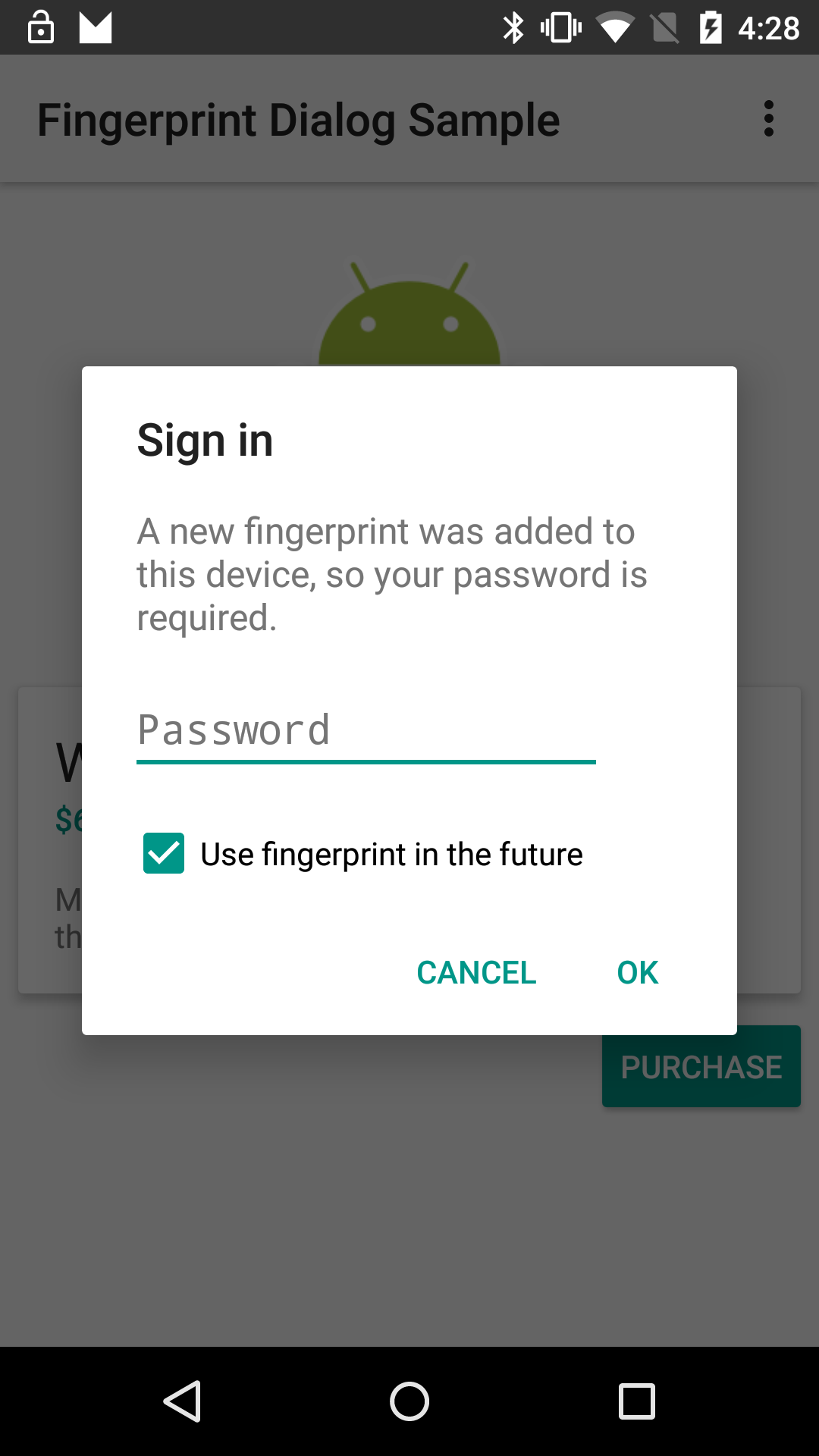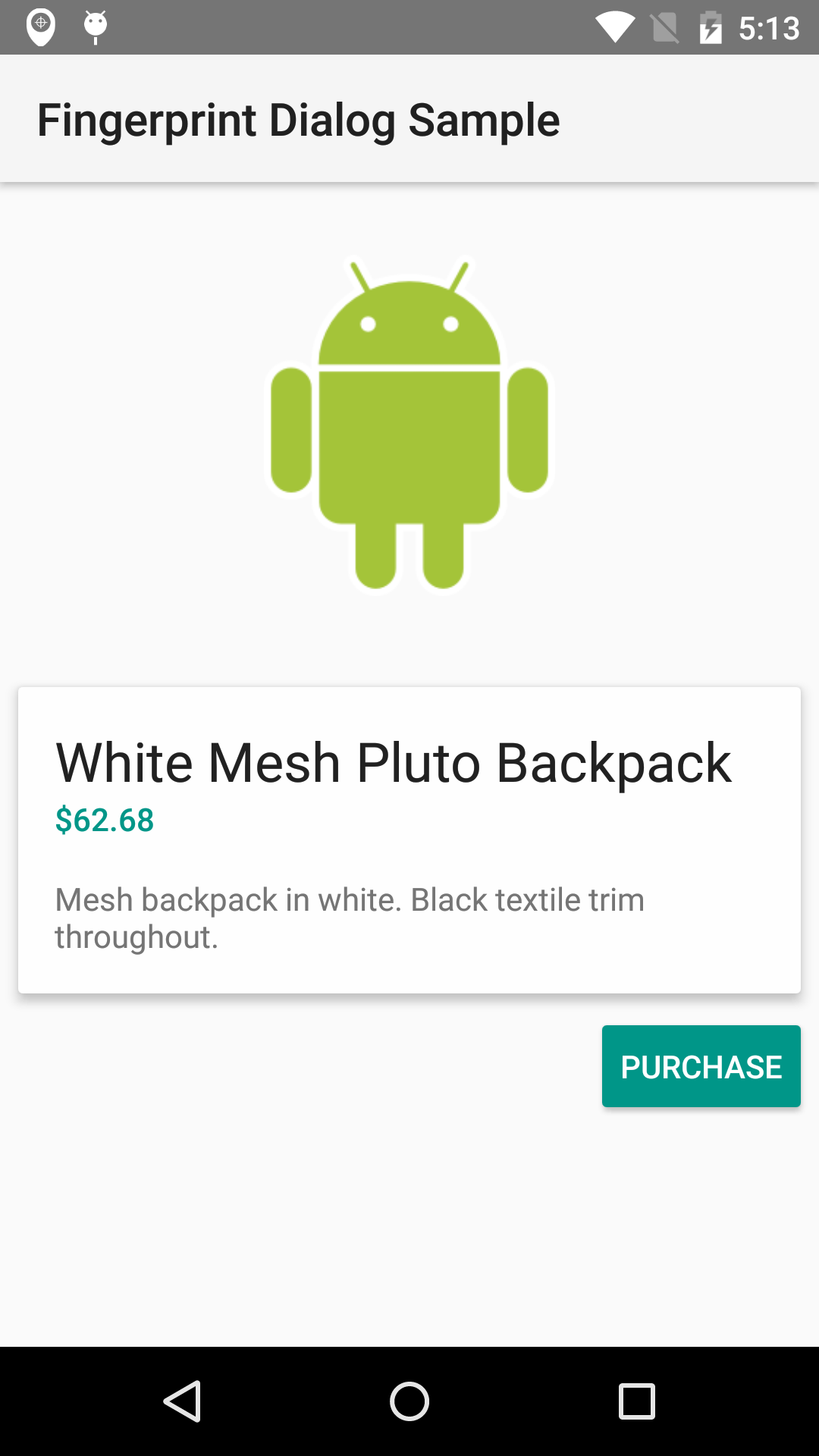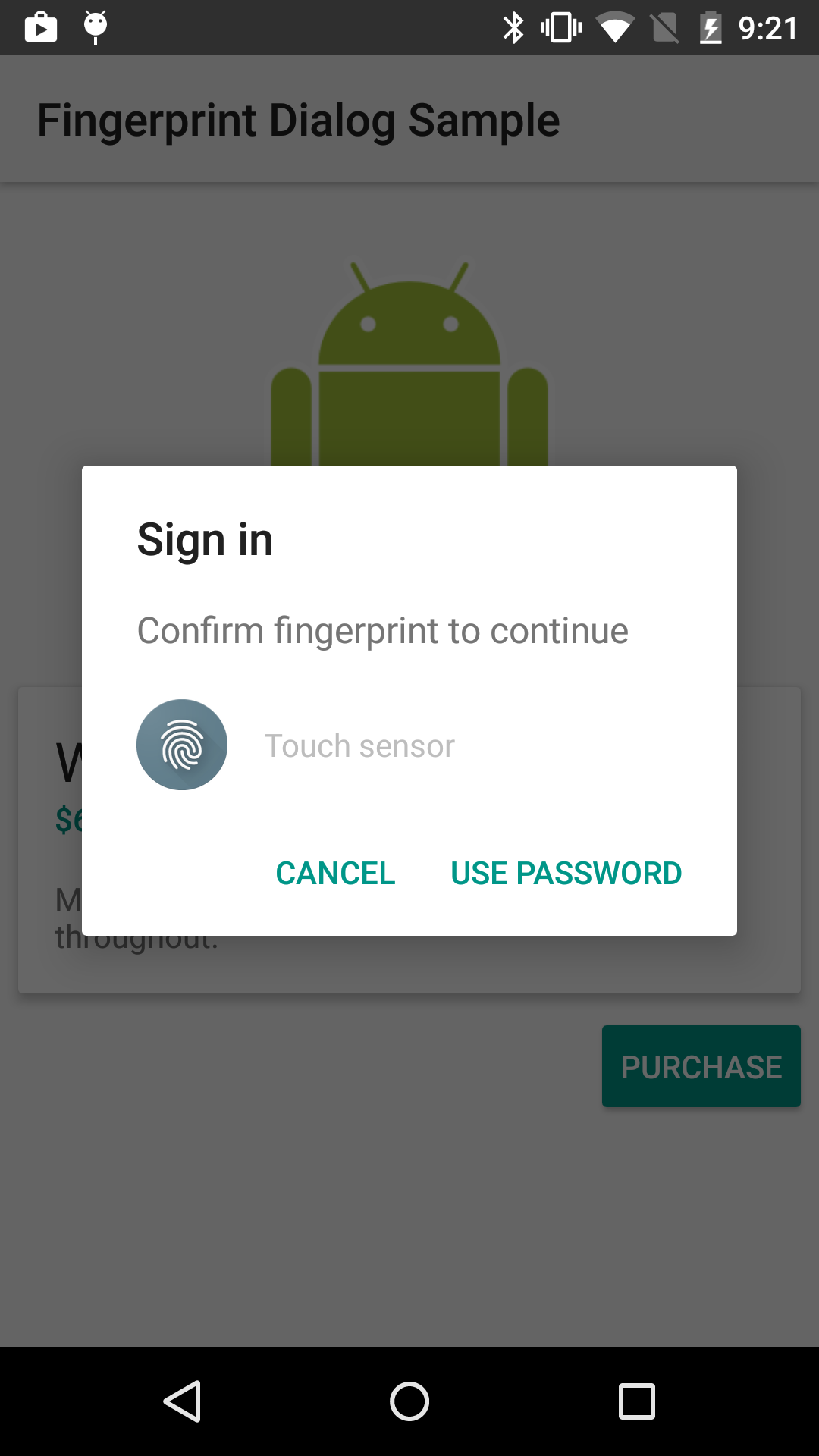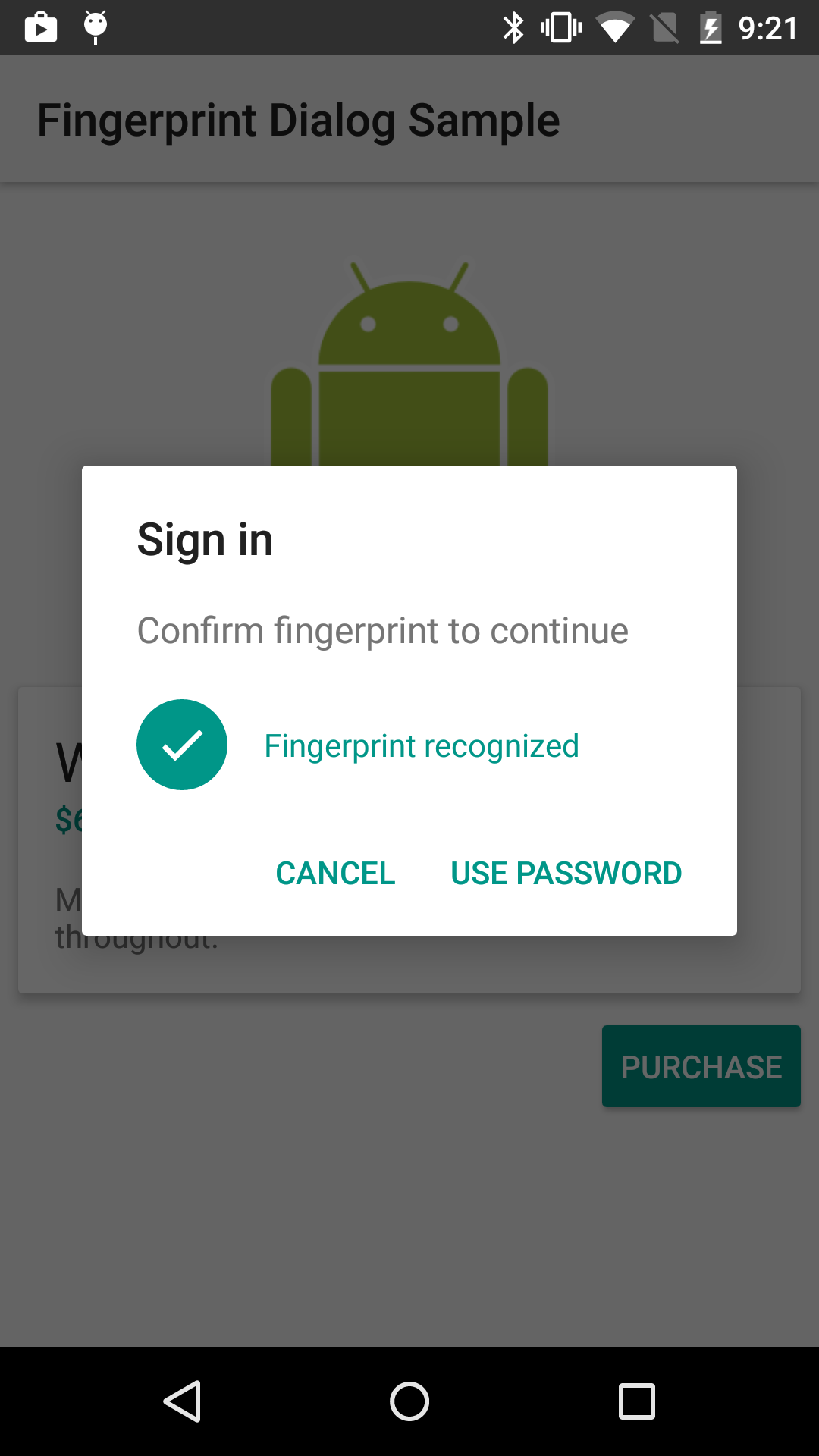Android AsymmetricFingerprintDialog Sample
A sample that demonstrates to use registered fingerprints to authenticate the user in your app
Introduction
This sample demonstrates how you can use registered fingerprints in your app to authenticate the user before proceeding some actions such as purchasing an item.
First you need to create an asymmetric key pair in the Android Key Store using KeyPairGenerator in the way that its private key can only be used after the user has authenticated with fingerprint and transmit the public key to your backend with the user verified password (In a real world, the app should show proper UIs).
By setting KeyGenParameterSpec.Builder.setUserAuthenticationRequired to true, you can permit the use of the key only after the user authenticate it including when authenticated with the user's fingerprint.
Then start listening to a fingerprint on the fingerprint sensor by calling FingerprintManager.authenticate with a Signature initialized with the asymmetric key pair created. Or alternatively you can fall back to server-side verified password as an authenticator.
Once the fingerprint (or password) is verified, the FingerprintManager.AuthenticationCallback#onAuthenticationSucceeded() callback is called.
Then you can verify the purchase transaction on server side with the public key passed from the client, by verifying the piece of data signed by the Signature.
Pre-requisites
- Android SDK 26
- Android Build Tools v26.0.1
- Android Support Repository
Screenshots




Getting Started
This sample uses the Gradle build system. To build this project, use the "gradlew build" command or use "Import Project" in Android Studio.
Support
- Google+ Community: https://plus.google.com/communities/105153134372062985968
- Stack Overflow: http://stackoverflow.com/questions/tagged/android
If you've found an error in this sample, please file an issue: https://github.com/googlesamples/android-AsymmetricFingerprintDialog
Patches are encouraged, and may be submitted by forking this project and submitting a pull request through GitHub. Please see CONTRIBUTING.md for more details.
License
Copyright 2017 The Android Open Source Project, Inc.
Licensed to the Apache Software Foundation (ASF) under one or more contributor license agreements. See the NOTICE file distributed with this work for additional information regarding copyright ownership. The ASF licenses this file to you under the Apache License, Version 2.0 (the "License"); you may not use this file except in compliance with the License. You may obtain a copy of the License at
http://www.apache.org/licenses/LICENSE-2.0
Unless required by applicable law or agreed to in writing, software distributed under the License is distributed on an "AS IS" BASIS, WITHOUT WARRANTIES OR CONDITIONS OF ANY KIND, either express or implied. See the License for the specific language governing permissions and limitations under the License.
compile "com.android.support:support-v4:26.1.0"
compile "com.android.support:support-v13:26.1.0"
compile "com.android.support:cardview-v7:26.1.0"
compile "com.android.support:appcompat-v7:26.1.0"
compile 'com.squareup.dagger:dagger:1.2.2'
compile 'com.squareup.dagger:dagger-compiler:1.2.2'
compile 'junit:junit:4.12'
compile 'org.mockito:mockito-core:1.10.19'
compileSdkVersion 26
minSdkVersion 23
targetSdkVersion 26
package com.example.android.asymmetricfingerprintdialog
versionCode 1
versionName 1.0
uses-permission
- android.permission.USE_FINGERPRINT
application .InjectedApplication
MainActivity
Main entry point for the sample, showing a backpack and "Purchase" button.
Alias for our key in the Android Key Store
Initialize the {@link Signature} instance with the created key in the {@link #createKeyPair()} method. * @return {@code true} if initialization is successful, {@code false} if the lock screen has been disabled or reset after the key was generated, or if a fingerprint got enrolled after the key was generated.
Generates an asymmetric key pair in the Android Keystore. Every use of the private key must be authorized by the user authenticating with fingerprint. Public key use is unrestricted.
SettingsActivity
Fragment for settings.



